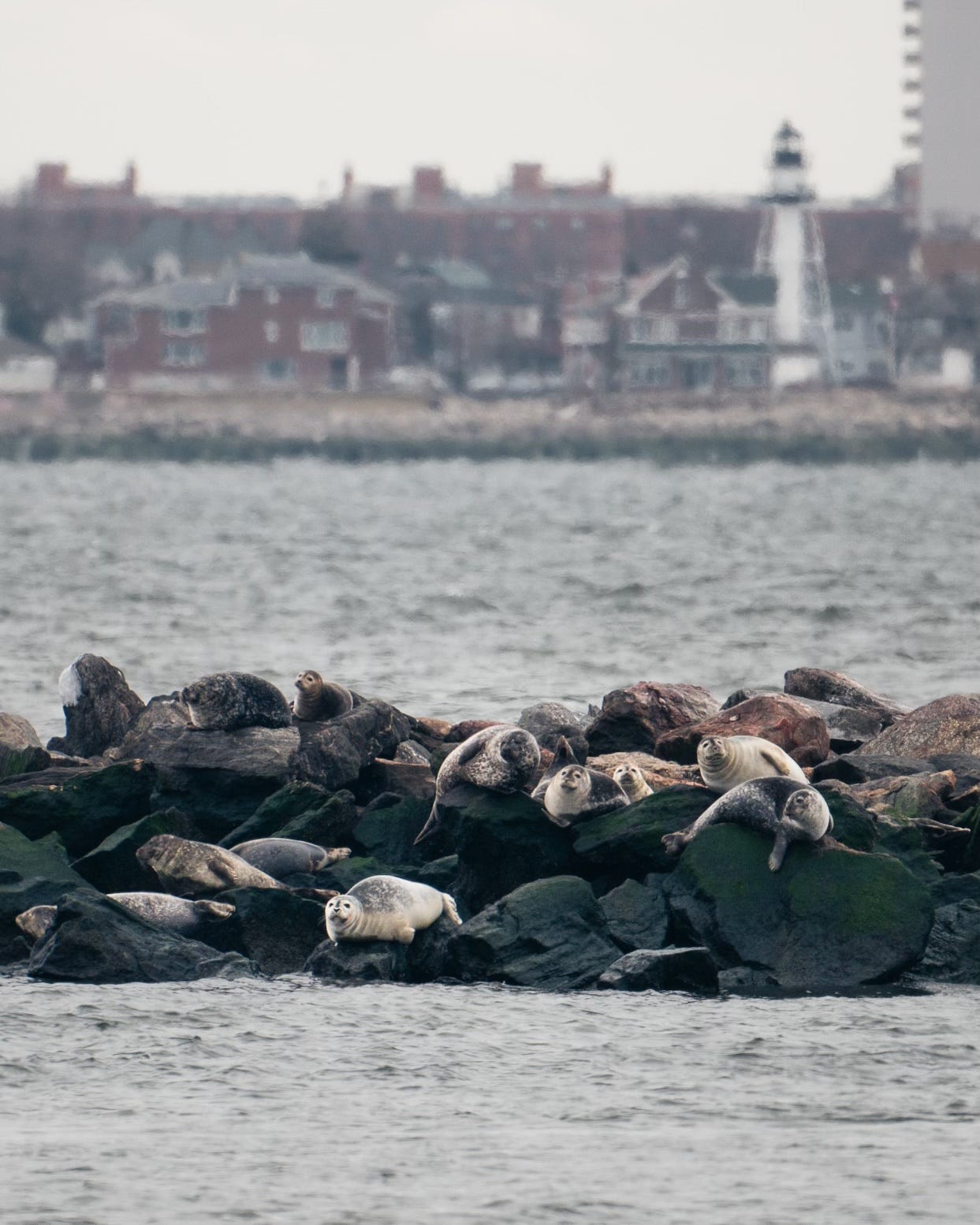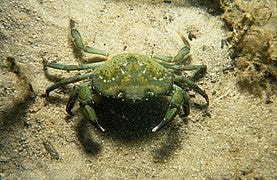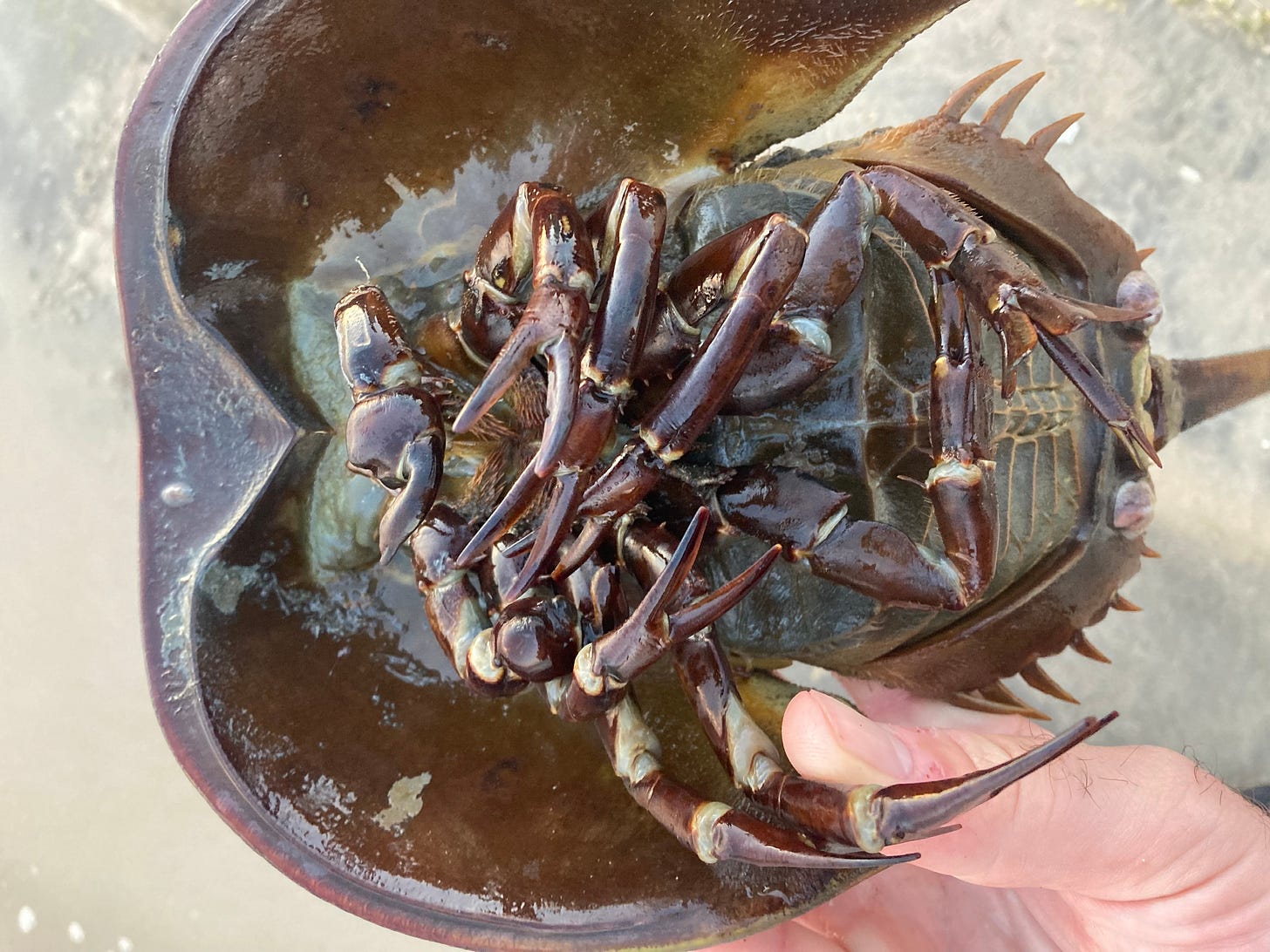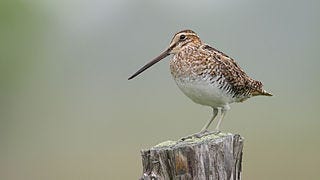Hello beloved readers,
Happy Sunday!
The seal boat was cancelled today due to a winter weather advisory, which made me realize how much I look forward to seeing those animals every week. Next Sunday feels like it’s years away. The tours got a nice write up in Time Out. Although I didn’t get out on the water this week, I was lucky enough to catch a glimpse of a harbor seal drifting along the northern tip of Manhattan, which was very cool. I was in Inwood Hill Park looking at ducks on a rainy day, and the seal drifted past a few feet away. It looked like it was sleeping, with its head poking out of the water, which was adorable. Then it opened its eyes, glanced at me, and disappeared—basically a perfect way to see a wild animal.
I also wanted to share some beautiful photographs of the seals we’ve been seeing on the Classic Harbor Line tours, courtesy of a photographer named Carlos Hernández who came out with us last week and gave me permission to share them here. Thank you, Carlos!



These photos were taken on our trip last Sunday (February 2nd), when we had over 50 seals out on the rocks at Swinburne Island, a combination of grey seals and harbor seals that were really posing for us. I had gone out Friday and seen about half that number, so it’s possible that another overwintering group has joined them (maybe a cohort of grey seals from Romer Shoal Light, a mile or so south of Swinburne island, hiding from the weather further out at sea).
I have a date scheduled to talk to a local pinniped biologist about seal behavior in winter, so you can expect a little interview, or at least a few snippets, in an upcoming letter, which will also include some info about the ecology and human history of grey and harbor seals. In the meantime, if you want to get out to the lower NYC Bay and see the seals that make their winter homes on our windswept, gloomy, forgotten man-made islands, you can buy tickets at this link.
I’m working on some longer pieces just for you, but in the meantime I thought I’d give you a little roundup of some things I’ve been reading and enjoying.
Eat More Green Crabs!
Last week, the Times Magazine ran a wonderful story by C.J. Chivers about people who are cooking with European green crabs, an invasive species that has been trickling down the East Coast since the early 1800’s, reaching a critical mass in the last few decades on some New England shorelines. The story has marine biology intrigue, first-person accounts of changes to estuaries from people who work in them for a living, and ecology-driven seafood stories. Basically, it checks all the Landlubber boxes.
One of the things I find interesting about movements to cook with invasive species is that they recenter our relationship to the natural world. All of our food comes from nature, even if we don’t really think about it while we’re tearing into a Big Mac. We tend to kind of take those ingredients for granted after a while, especially when the same stuff is at the store every time we go there.
Just like ecosystems, cuisine takes time to develop. Many recipes are the result of centuries, or even millennia of trial and error, changes in movements of human and animal populations, and blind luck. It takes time to incorporate new life forms into our diets! Deliberately building a new culinary tradition is a little bit like trying to push the clock forward, accelerating an organic creative process, and it forces us to think about our relationship to the environment again. Chefs who work with invasive plants and animals are kind of speed-running the work of forging connections between different ingredients, experimenting until they find something that works. Then they have to take the food and try to help people connect to it.
To me, that process kind of mirrors the dynamics at play between natural ecosystems and the life forms that invade them. Invasive species often find themselves in these kind of…clumsy, quick relationships with these other plants and animals. Sometimes the connections can really click (think red-winged blackbirds nesting in phragmites), but lots of the time, they’re kind of surface-level. A yellow-billed cuckoo or a flycatcher might eat a spotted lanternfly, but it doesn’t mean that those species are suddenly connected by a deep predator-prey relationship like the ones that develop in nature over tens of thousands of years. In cooking, there’s the same kind of tentative trial and error–a struggle to jam a round peg in a square hole.
Basically, I think it’s cool because it reminds me that we’re just animals eating other animals, and just like the fish and birds that maybe aren’t as naturally tuned in to green crabs, people have to work a little harder to to get something out of these animals. For the sake of our native environment, I hope that they succeed!
Horseshoe Crabs (Still in the news)
If you’ve been reading this newsletter since the beginning, you know that I’m a big fan of horseshoe crabs. This isn’t the first time I’m writing about them, and won’t be the last. If you’re a newer subscriber, you can check out my horseshoe crab story from last June right here.
If these animals are anything, they’re reliable–they’ve been making their spawning appointments in May and June for 450 million years–but this year they made headlines early due to a conservation bill that’s floating around in New York’s state government. The bill would ban all harvest in New York State, leaving the animals to conduct their gloomy orgies in peace.
Anyone who knows me knows that I’m a big fan of laws that protect animals, and I have nothing to say against this one, but I do think it’s a kind of interesting opportunity to discuss the tradeoffs we make in our relationship to the natural world.
One of the premises of this newsletter is that a big part of what’s gone wrong in our relationship to the ocean (and the environment more broadly) is that we’ve forgotten how to see the threads that connect us to it and it to us. We go to the grocery store for our seafood, not, you know, the sea. And just as our greatest abuses of those environments are shuffled out of sight, our areas of dependence on the ecosystems around us are often invisible. Staring down at those scorpion-like, carapaced, freakish animals, it’s hard to imagine that we could possibly have anything to do with them. But we do! They’re important natural resources.
The primary reason we harvest horseshoe crabs is for their magic blood. Horseshoe crab blood is a pale, milky blue, and contains something called limulus amebocyte lysate or LAL–an organic substance that congeals when it comes into contact with bacterial endotoxins. Basically, it gives away the presence of harmful, hard-to-detect bacteria that could, if it got into people’s blood, hurt or kill them. As a result, horseshoe crab blood is used in the manufacture of all kinds of medical products. Needles, vaccines, bandages, and anything else at a hospital that might come into contact with the blood running through our bodies is tested with horseshoe crab blood in what’s known as a LAL test.
Images of LAL harvest are pretty dystopian. The horseshoe crabs are lined up on steel lab benches, tied upside down as masked technicians bleed them into beakers. It resembles something out of The Matrix, which is fitting, I think, in terms of the point I’m trying to make. It’s a hidden, complex dependence: these animals touch our lives in huge ways that we don’t really see.

The second way people use horseshoe crabs is as bait.
In the spring, when the females are full of eggs, they make excellent bait for whelks–large marine snails that inhabit shallow marine environments along the East Coast. There are two whelk species around here–knobbed and channeled whelk–and they’re reportedly pretty delicious, although I’ve never eaten them. One of the pieces I’m toying around with is about some of the marine snails on the East Coast of the US, so you can look forward to that sometime this summer!
We don’t hear too much about our local fisheries, especially our smaller-scale ones, which is in part because they’re in a diminished state, but you can still see the patchy remnants of fishing communities heading out to the water throughout the year. They’re doing better in some coastal areas in the Northeast than in others. In Maine, the whole surface of the water is dotted with pretty, brightly painted lobster buoys that sparkle their primary colors at the surface. In the Chesapeake, you can still see the baymen pulling their crab pots and checking their pound nets on little skiffs in the morning. In New York City, which was much more heavily industrialized than those places, our small-scale fisheries are a kind of hush-hush, behind the scenes affair. There’s more poaching than you’d think, with occasional busts uncovering someone with a boat that’s full to the brim with illegally harvested horseshoe crabs or clams.
I’ve gotta say that, despite my many concerns about the state of the environment, the future I like to envision is one where we’re harmoniously connected to nature, including through fishing and eating seafood. It would be cool if there were enough horseshoe crabs (or whelk, for that matter) that we could build a local economy based on taking some horseshoe crabs here, and some whelk there, trading our way through the natural world for our prosperity. We’d all be more connected to the environment, with a real stake in its future instead of helplessly watching it diminish at a weird, artificial distance.
There’s something almost conspiratorial about our relationship with nature today, which is odd because harvesting natural resources is one of our most basic human behaviors. We evolved to pick berries and gather crabs and fish and stuff, and we still need to do all of that to survive, but we’ve hidden a lot of that stuff behind the sanitized world we interact with on a daily basis (that’s the part of it that’s like The Matrix).
All of this is to say that there are tradeoffs in the management of fisheries, not just between the horseshoe crabs in the wild that supply eggs for red knots and the ones we catch to put in our vaccines or our whelk traps, but also in our familiarity with the natural world, and the state of our relationship with it. I’d love to see the population of horseshoe crabs shoot back up, and I unequivocally support any effort to conserve them, but I’d also like to conserve some of those deep roots that fishing communities have with nature. People who fish and hunt and stuff tend to have a lot of insight about how natural systems work that aren’t readily available in large parts of our current society, and if we shut them out entirely, we risk losing those connections.
You should read the latest installment of Ryan Mandelbaum’s “eyy i’m walkin here.”
Ryan’s newsletter is consistently great, and touches on lots of stuff that I’m also interested in, but I thought this one was particularly wonderful, even though it was also quite sad.
The story is about a friend of Ryan’s named Beau who recently passed away tragically, and the unlikely friendship they built. Ryan and Beau met during a Christmas Bird Count in Michigan in 2018, assigned to bird together by the organizer, and formed a kind of odd-couple friendship that resonated with me. The first day they met, Beau fed Ryan a Wilson’s snipe he’d hunted, something that, to say the least, wouldn’t fly in most of the local environmental circles I’m in. Beau and Ryan stayed in touch over the years, sharing the birds they saw and their thoughts on the natural world, even as Beau went on to do Christian missionary work in Angola, and Ryan remained in godless Brooklyn. To me, the story underscores the point I’ve been circling throughout this letter about the value of keeping open various pathways to experiencing and connecting to nature, not just because they keep us more vividly tuned into the ecosystems around us, but because they help us connect with each other. I hope you enjoy it as much as I did!
Finally: the old chef at the restaurant I used to work at reached out to tell me he’d made a version of one of the soups I shared in my last letter, adding heirloom spinach and salted cod. The photo he sent is beautiful, and I’m bothering him to write it up, so we might get a special guest recipe from him, but he is also busy working as a chef and raising a child in Los Angeles, so we’ll see. Many of you have reached out since this started to tell me they cooked some of the recipes I sent out here, and I just want to say that every time that happens, it makes me very happy!
See you soon,
Russell







We're getting such mixed messages about spotted lanternflies here in Pittsburgh. The signs at all the parks say kill, KILL!!! But the latest is that they're not as big a threat to the native trees as previously thought and the birds are developing a taste for them finally, so maybe don't be so ruthless? IDK
Good post. I love your vision about the harmony we could achieve with our ecosystems while still being able to benefit from them in tasty ways
convo about green crabs reminds me of this from alicia kennedy last year, on invasive lionfish in the carribean: https://www.aliciakennedy.news/p/on-lionfish